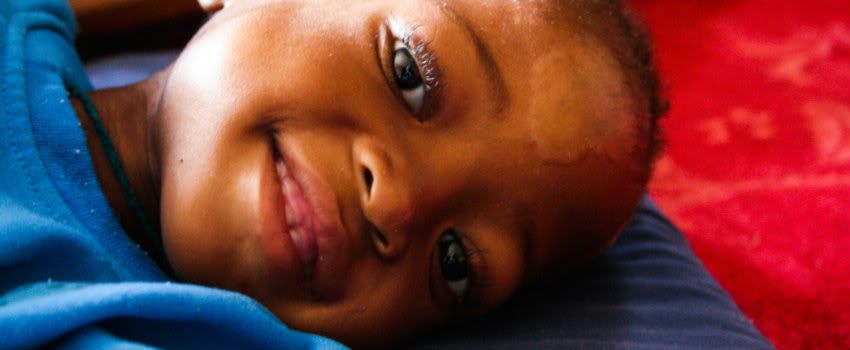Any kind of meaningful experience should shift your perception of things, so perhaps that's why I am worse than I've ever been at guessing a child's age. When kids come to the TTL safehome, it's usually (ok, never) because their home situation and health status are great--quite the opposite, hence TTL's entire purpose. So even while we have an amazing success rate in terms of transforming tiny sick babies into chubby happy ones, the pre-TTL time of suffering still leaves a mark on rates of physical development.
Even though I know each safehome child's name, nickname, medications, favorite toys, alarming versus normal fussy cries, and signature spastic movements or other idiosyncrasies, I'm constantly re-checking our med charts to remind myself how old each one is; it's the one detail that my brain cannot seem to accept into the permanent archives, perhaps because every time I check a kid's age it seems like a surprise (we have a four month old who is stronger and almost as big as a two year old, for example). In almost all cases, our kids are much smaller than, say, their American counterparts.
It's no exaggeration to say that at first glance many of our kids or any of the many, many malnourished children in the rural areas surrounding TTL look months or even years younger than what my previous experiences with healthy, well-fed children would lead me to assume. One of my best friends at home has a baby around maybe five months old who is developing normally according to US standards but when I see pictures and videos she looks to me now through my TTL lens like a freakishly large and incredibly cognitively-gifted mini superhero.
Just last week we admitted two new children to the safehome, both our oldest here currently. Even though they are the most shy and withdrawn of our kids--not at all surprising since they are old enough to perceive the dramatic changes in their circumstances at a deeper level than the infants and thus more likely to struggle with fear and disorientation until they feel secure--we're confident they'll grow into their roles as the new king and queen of the TTL playroom. While initially reported as both being four years old, more research revealed that one is just under three and the other is four and a half. Yet before paperwork surfaced to confirm dates of birth, we were prepared to take initial reports at face value because in there is no reliable norm for kids who are that sick and malnourished.
Thankfully, TTL's focus on kids age 0-5 allows us to target kids in the most vulnerable early developmental stages and give them the best shot at making up lost ground. Between the safehome and our vast outreach network, we are able to reach hundreds of kids facing nutritional challenges, usually on top of other health conditions such as HIV or respiratory infections. Our safehome kids eat five times a day--three meals, two snacks or, for infants, as much bottle feeding as needed--and the frequency, quantity, and variety of foods they get is in no way the norm in Lesotho. On outreach, we commonly supply staples (such as corn meal and sorghum) as well as lots and lots of formula for babies whose mothers cannot breastfeed for a variety of reasons (sickness, death, disappearance, and the mother's own nutritional deficiencies are the most common).
While food security isn't necessarily at the heart of TTL's work, it's definitely a critical component of our work. Every mouthful helps these kids get one step closer to being back on track, and in their own way they are all turning out to be mini-superheroes.


No comments:
Post a Comment